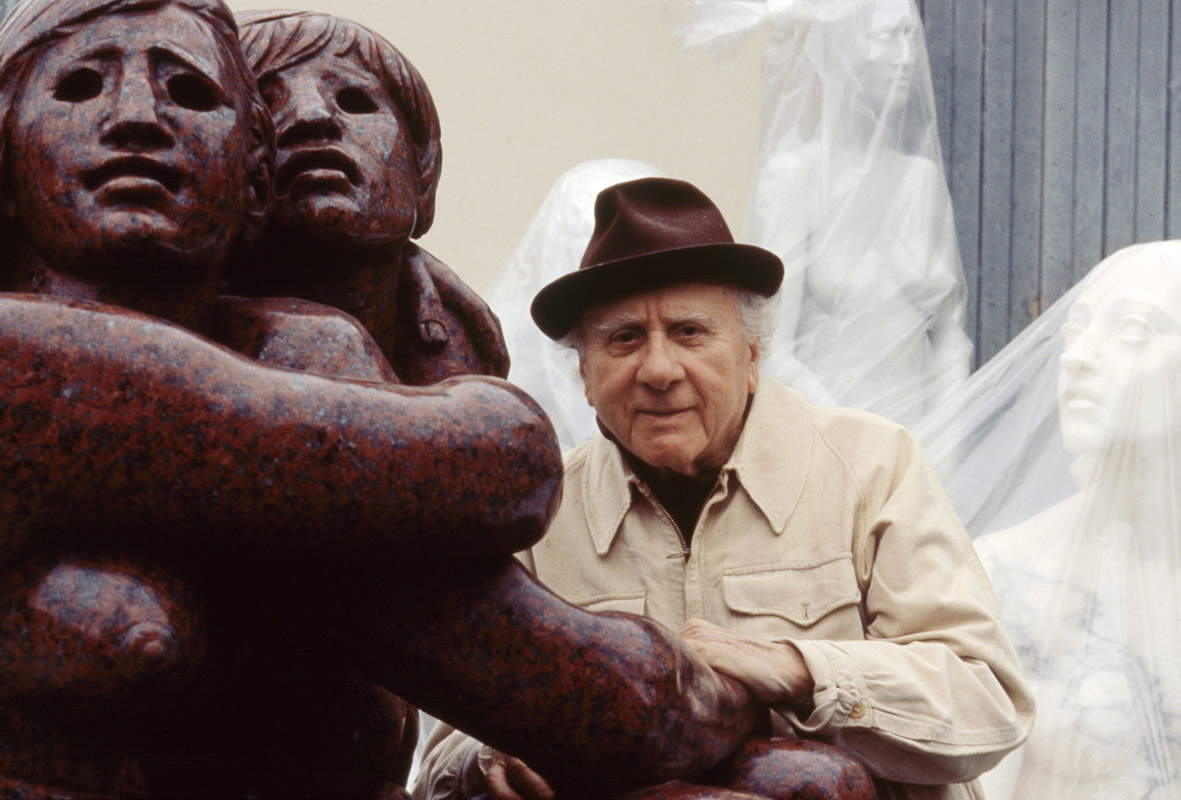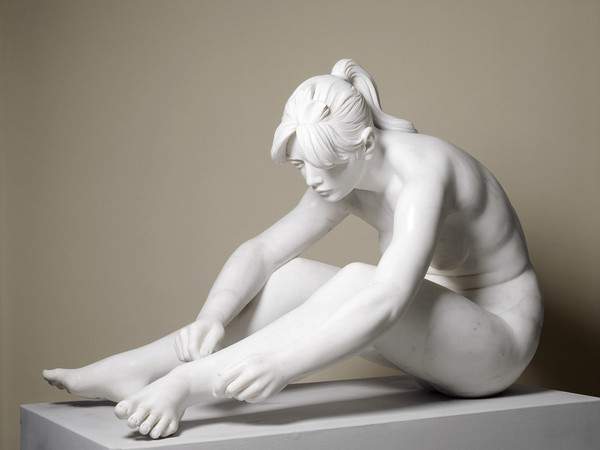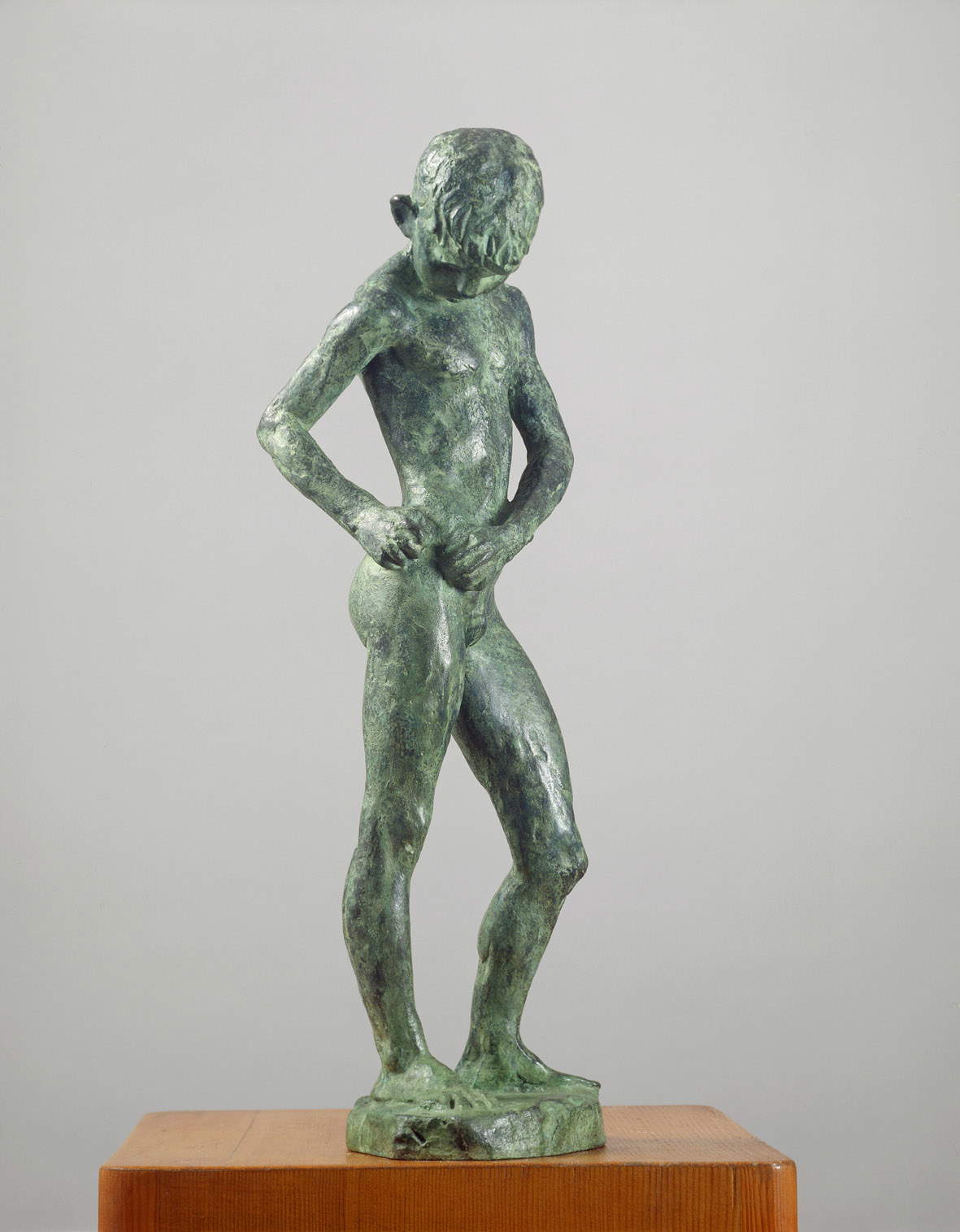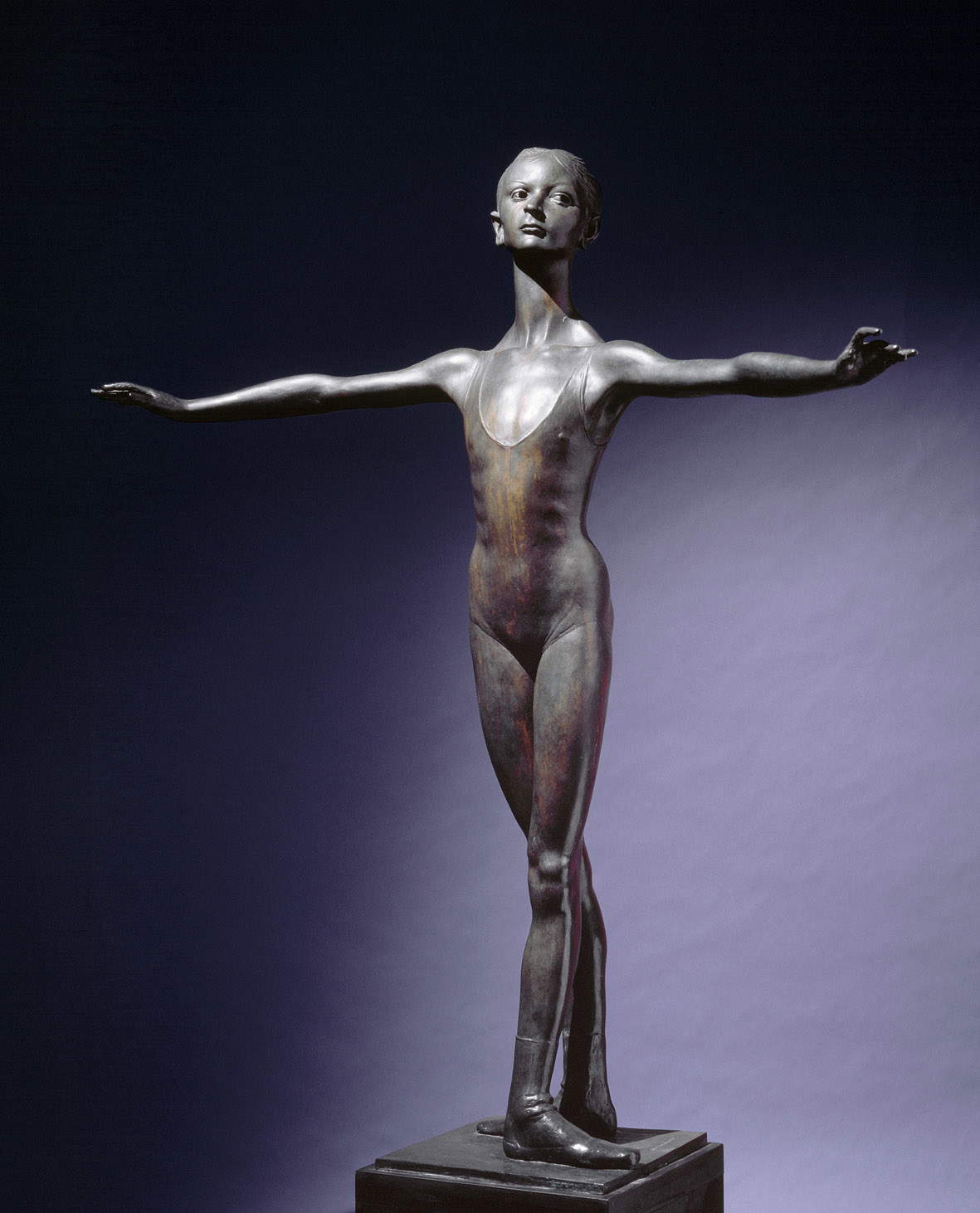On the 120th anniversary of the birth of sculptor Francesco Messina (Linguaglossa, Catania 1900 - Milan 1995), one of the most significant sculptors of the 20th century, Vercelli dedicates a major exhibition to the artist, with no less than 120 works, divided among three exhibition venues: ARCA, the Archbishop’s Palace and theformer church of San Vittore. A retrospective promoted by the City and Archdiocese of Vercelli in collaboration with the Messina Foundation and Nicola Loi Studio Copernico (Milan).
Curated by Marta Concina, Daniele De Luca and Sandro Parmiggiani, Francesco Messina. Prodigies of Beauty. 120 works 120 years after his birth, this is the title of the exhibition, is open to the public until Feb. 27, 2022, and is intended as an anthological exhibition that aims to recount through stories, friendships and thoughts the figure of the famous sculptor. The works on display have been chosen to present the various themes dealt with by Messina, such as sacred art, man, and the animal world; masterpieces of his production that are also linked to great personalities of the time who knew him and with whom a deep friendship was established, as in the case of Salvatore Quasimodo.




Among the goals of the exhibition is not only to pay tribute to a great sculptor of the 20th century of international renown, very sensitive as mentioned above to sacred art, the human figure and the animal world, thus fostering the knowledge and in-depth study of his production, but it is also to create a widespread exhibition to encourage the inclusion of different exhibition venues in the discovery of the city. In fact, it starts in the former church of San Marco, in the prestigious ARCA space, and then continues in some spaces of the Archbishop’s Picture Gallery in the former church of San Vittore.
Beauty, as the very title of the retrospective emphasizes, is very important in Messina’s production, to which power, elegance, and rigor are added: the saints, busts, and dancers show the enchanting energy of the time; in the animal the vitality of nature is reflected. The common thread of the widespread exhibition is the beauty of the artist’s work, which becomes a marvel of scenic and intimate representation at the same time. In an interview he declared, “I am interested in capturing beauty even in ugliness,” and “in front of beauty I feel like a victim both as a sculptor and as a man.” Messina’s beauty also lives in animals (very famous is the large dying horse modeled in 1966 for the Palazzo della Rai in Rome) and expresses his sculptural ability of exuberant sensuality especially in female figures. To women in particular he dedicates the mystery of beauty “the source of a restlessness that has never been quenched.” He was also an artist of genuine religious inspiration: through his many commissions, he is the bearer of an authentic religiosity based on a simple faith and relies on Nature and Culture when he has to transfer the sacred image into marble or bronze.
The anthology does not follow a chronological sense, but a path related to the depictions and materials of the works, also dialoguing with the exhibition venues. In ARCA, the main venue, his large white marble sculptures and famous busts, dancers, and horses are on display; in the Archiepiscopal Picture Gallery silver and metal elements related to the sacred and the spiritual are visible, while in the outdoor space of the former church of San Vittore some large marble sculptures that recall the theme of the sacred can be seen from the churchyard.
Messina captured the essence of tradition in the expressive freedom of his art. Quasimodo described him as "the Apollonian and meditative spirit: thanks to his poet friends such as Quasimodo and Montale, who were as modern as he was, Francesco Messina’s art came out of the workshop tradition by entering a dimension of primary humanistic values. In his work there is a fidelity to an ancient rigor, to its highest achievements, and his modernity also lies in this.
Among the portraits of friends and colleagues one recognizes those of Lucio Fontana, Salvatore Quasimodo, Riccardo Bacchelli (with monocle), Alfonso Gatto, Arturo Tosi, and Eugenio D’Ors, while among the female figures, especially dancers, the portrait of Carla Fracci, Luciana Savignano, and Aida Accolla. There is no shortage of painted works, such as those depicting Lia Ranza, Isabella Ostini and Vittoria Leone. On display in the Archbishop’s Palace and the former church of San Vittore are works of a religious nature, such as one of the bronze sketches of the large statue of Pius XII (in St. Peter’s in the Vatican) and that of St. Philip Neri, the 1933 Job naked and kneeling, or the 1956Adam and Eve, fragile but at the same time powerful, clutching each other with their questioning gaze turned to the void. There are many other works with a religious character, such as Cardinal Schuster, the Deposition mindful of the Rondanini Pietà, and the sketch of the gilded bronze panels for the Saint Catherine in Castel Sant’Angelo in Rome.
Born on December 15, 1900, in Linguaglossa, a small town near Mount Etna, to a very economically disadvantaged family that emigrated to America, Francesco Messina spent his boyhood in Genoa, where he had the opportunity to frequent a number of marble workers’ workshops: his great passion for sculpture was born here. From the 1920s he began exhibiting his works, allowing him to come into contact with some of the great men of letters of the time, who later became friends, such as Salvatore Quasimodo, Eugenio Montale, Arturo Martini, and artists such as Giorgio De Chirico and Carlo Carrà. His trips to Paris in the same years allowed him to complete an international education that also brought him briefly close to the avant-garde. In Genoa he also met his future wife and his great reference also in his work, Bianca Fochessati Clerici, whom he married in 1944. In 1932 he moved to Milan where he came into contact with artists such as Giorgio Morandi and Lucio Fontana; two years later he obtained the chair of sculpture at the Brera Academy where he remained for over thirty years. It was especially the 1950s and 1960s that made Messina very famous in Italy and abroad thanks to the many requests from public and private commissions. His most famous Roman works include the Monument to St. Catherine at Castel Sant’Angelo, the Monument to Pius XII for St. Peter’s Basilica, and the Dying Horse for RAI. He died in Milan on September 13, 1995, in the city that welcomed him as a young man and made him famous for many years, so much so that he was awarded honorary citizenship. In the Lombard capital, in 1974, he completed restoration work on a church now in a state of neglect: the former church of San Sisto. After three years of work, carried out at his own expense and overcoming difficulties of all kinds, he obtained the now deconsecrated place as a space for his activity; in 1969, in fact, the artist obtained from the City of Milan, through a commodate of use, the possibility of using this abandoned church marked by the bombings of 1943. After restoration, the church thus became a cultural space, a workshop, a museum, a studio. Here, as described by writer and friend Piero Chiara, Messina looks like “a new kind of officiant in a yellow smock, always intent on celebrating the rites of sculpture, which require a true temple, that is, not stingy with space and light from above.”
Reservations are required to visit the exhibition by writing to prenotazioni.vercelli.mostre@gmail.com or contacting 3383473682, contactable from 10 a.m. to 7 p.m. Thursday through Sunday. Reservations can also be made in ARCA during the same hours. Admission is free of charge.
Hours: ARCA, Thursday to Sunday 10 a.m. to 7 p.m. Bishop’s Palace, Thursday to Sunday 2 to 6 p.m. Former Church of San Vittore, view from outside.


 Francesco Messina,
Francesco Messina,
 |
| Vercelli dedicates a major retrospective exhibition to sculptor Francesco Messina, 120 years after his birth |
Warning: the translation into English of the original Italian article was created using automatic tools. We undertake to review all articles, but we do not guarantee the total absence of inaccuracies in the translation due to the program. You can find the original by clicking on the ITA button. If you find any mistake,please contact us.